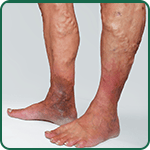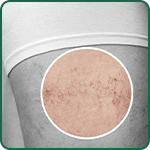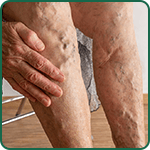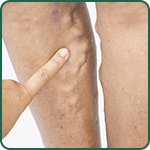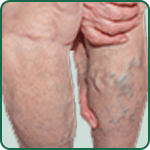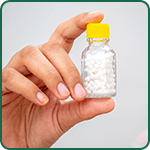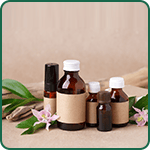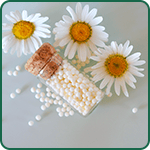Homeopathic Varicose Veins Treatment
Varicose veins are dilated, tortuous, and elongated superficial veins, occurring particularly on the legs. Varicose veins can be defined as any vein in the body that becomes twisted, stretched out, or loses elasticity.
The veins have a valve-like mechanism that allows blood to rise towards the heart. Leaflets cover the valves. When the flies lose their elasticity, the valves lose their ability to push blood upwards, resulting in back pressure and further vein elongation. As a result, the veins become twisted and hardened or ‘tortuous.’ Finally, the veins become visible as vascular tubes, particularly on the legs.
Varicose veins primarily affect the lower limbs, and the condition worsens when one stands for an extended period. People in the business of standing for long periods, such as salespeople, cops, plastic surgeons (who frequently stand for hours during surgery), and so on.
Call Now - +91 9958318261 Avail Free Consultation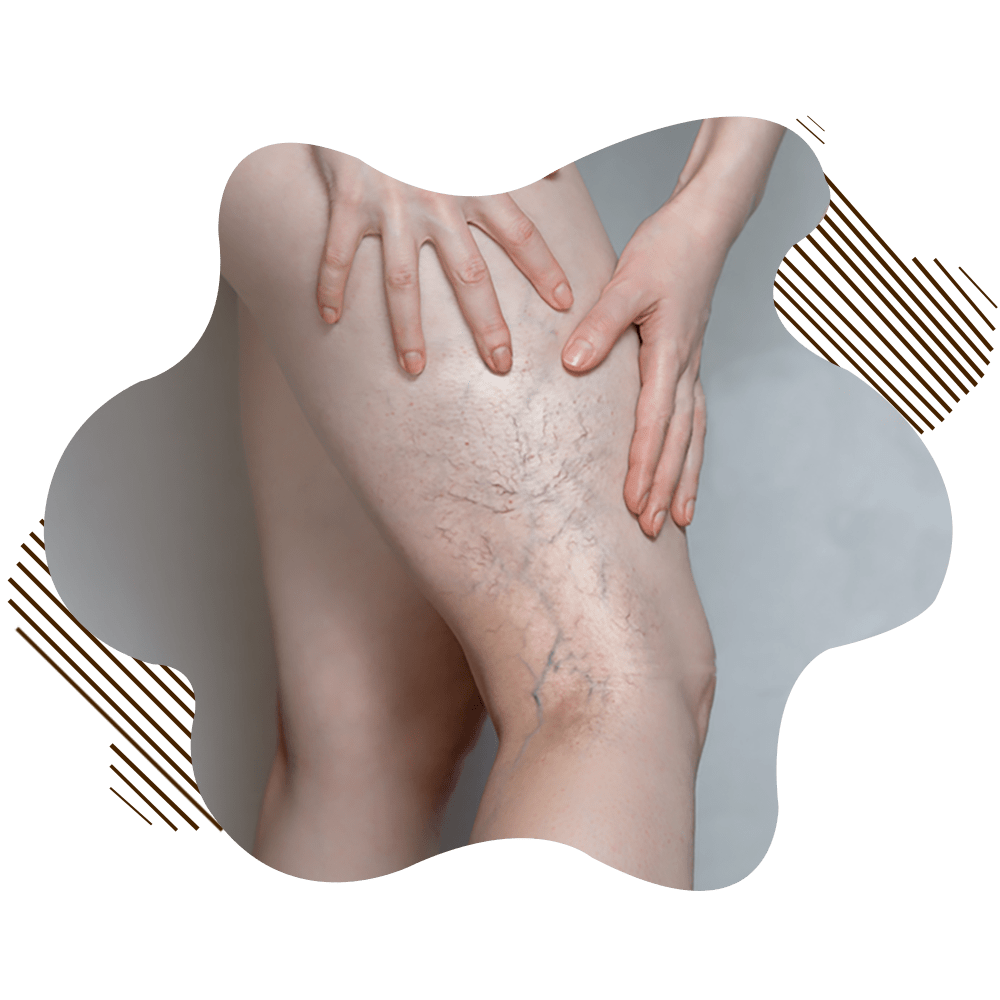
Symptoms
Varicose veins may not be painful. Varicose vein symptoms include:
- Veins of Dark Purple or Blue
- Veins that Appear Twisted and bulging frequently resemble cords on the legs.
When painful varicose vein symptoms appear, they may include:
- An aching or heavy sensation in the legs
- Lower leg burning, throbbing, muscle cramping, and swelling
- Pain that worsens after a long period of sitting or standing
- Itching in or near one or more veins
- Skin color changes around a varicose vein
Spider veins are smaller in size than varicose veins. Spider veins near the skin’s surface are frequently red or blue.
Spider veins are most commonly found on the legs. They vary in size and structure and frequently resemble a spider’s web.
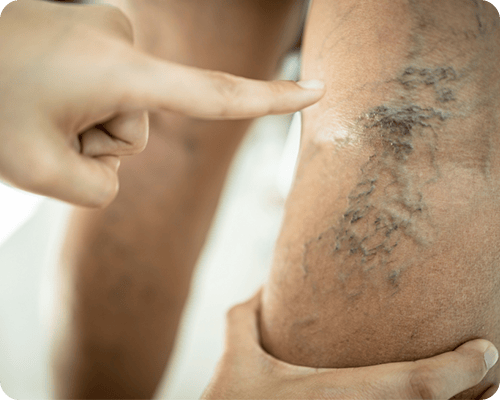
What is a varicose vein?
Varicose veins develop when your veins become enlarged, dilated, and overfilled with blood. As a result, varicose veins are swollen and raised, with a bluish-purple or red color. They are frequently excruciating. The condition is widespread, particularly in women. Varicose veins affect approximately 25% of all adults. Varicose veins most commonly appear on the lower legs.
Varicose veins develop when veins do not function properly. One-way valves in veins prevent blood from flowing backward. When these valves fail, blood begins to pool in the veins instead of rushing toward the heart. As a result, the veins get enlarged. Varicose veins are commonly found in the legs.
Various factors can cause varicose veins.
Pregnancy
The blood volume in the body increases during pregnancy. This change benefits the growing baby but can also cause vein enlargement in the legs.
Genetic
The most critical risk factor for varicose veins is a family history of varicose veins. For example, children with two parents with varicose veins have a 90% chance of developing them.
Age
The valves in the vein that help control blood flow wear out with age. Because of this year, the valves eventually allow blood to flow back into the vein, where it collects.
Prolonged standing
Long periods of sitting or standing can cause blood to pool in the leg veins, increasing the pressure within the veins. The increased pressure can cause veins to stretch. This may weaken the vein walls and damage the valves.
Obesity
Obesity strains your circulatory system because your vessels must work harder to deliver, distribute, and return blood to your heart due to the increased body mass. This can eventually result in the damage that causes varicose veins.
Menopause
Women are more likely than men to develop the disease. Because female hormones tend to relax vein walls, hormonal changes before a menstrual period, during pregnancy, or menopause could be a factor. Birth control pills, for example, may increase the risk of varicose veins.
Varicose vein complications include
Close to the skin, veins may rupture and bleed. The bleeding could be spontaneous or caused by a minor injury. The weakening of vein walls causes spontaneous rupture. This occurs as a result of vein enlargement over time. Furthermore, the pressure inside the veins is already high due to blood pooling. The weak vein wall and high pressure inside the veins can cause spontaneous vein rupture.
Venous Ulcers
Regarding varicose veins, A venous ulcer is a painful sore near the ankles on the leg. Venous ulcers heal in stages. First, pressure builds up in the veins due to blood pooling. The increased pressure can cause the skin around the ankle to break and form an ulcer if not treated promptly. The varicose ulcer typically appears on the inner thigh skin, just above the ankle. Typically, the base of such an ulcer is red with irregular borders. The skin around the ulcer is discolored, dark, and complex. Swelling and heaviness in the leg, as well as foul-smelling discharge from the ulcers, itching, burning, and pain of varying intensity, may occur in the event of an infection.
DVT (Deep Vein Thrombosis)
Deep vein thrombosis (DVT) is the formation of a blood clot within a vein deep within the body (usually in the leg). As a result, the affected leg becomes swollen and warm. Other symptoms include leg pain and redness/discoloration of the skin on the leg. DVT can result in serious complications such as pulmonary embolism (when blood clots in veins break and travel via the bloodstream to lodge in the lungs). Pulmonary embolism symptoms include shortness of breath, chest pain, dizziness, rapid pulse, and blood spitting.
Varicose Eczema
Another complication of varicose veins is varicose eczema (also known as stasis / gravitational eczema). It primarily affects the lower legs, causing the skin to become dry, red, itchy, scaly, and flaky. The affected skin has a shiny appearance and may be painful and tender. In addition, a brown discoloration of the skin may be present in some people.
Superficial Thrombophlebitis
Superficial thrombophlebitis is an inflammation of the vein near the skin’s surface caused by a blood clot. Intense swelling, redness, warmth, pain, and tenderness in the legs. A common symptom is vein hardening and darkening of the skin around the vein. In most cases, it is a short-term condition that resolves itself in about 2 to 3 weeks without complications. Cellulitis and DVT are rare complications that may occur in a minority of cases.
Bharat Homeopathy
Consultation Advantages
Each day, over 200 patients engage in conversations with a Bharat Homeopathy doctor to uncover the underlying causes of their health concerns and receive tailored treatment right at their doorstep. Here are the factors contributing to the trust of millions worldwide.

Happy Patients

Doctors
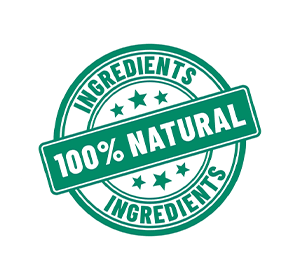
Safe & Natural
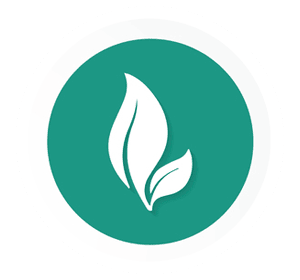
Side Effects

